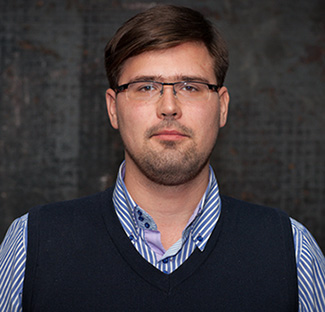
Yuri Radchenko
Postgraduate scholar Yuri Radchenko is focusing his research on the Holocaust in Ukraine – something he says he would have trouble doing if he didn’t have the Visual History Archive.
Radchenko completed his PhD in history in 2012 at V. Karazin Kharkiv National University in Ukraine, with his dissertation on the Holocaust in Ukraine in the military-administered area. Recently he also coordinated the Yahad In Unum exhibit “Holocaust by Bullets” in Kharkiv, Ukraine, and completed research fellowships at Yahad In Unum, the German Historical Institute in Warsaw and the Anne Tapenbaum Centre for Jewish Studies at the University of Toronto.
Radchenko’s most recent publications include an article for Yad Vashem on the Ukrainian auxiliary police and the Holocaust in Generalbezirk Charkow, one of the largest regions of Ukraine that fell under the jurisdiction of the German military administration. He also published an article in the journal Holocaust and Genocide Studies on the same subject.
“You hear how people survived, their strategies for survival, and how it was for them post-war."
Radchenko cited testimony from the Visual History Archive in each of these articles and has turned to the Visual History Archive throughout his academic career, watching, he estimates, hundreds of testimonies. He is often interested in comparing Jews’ and gentiles’ descriptions of events of the Holocaust, looking for similarities and contradictions, and finds testimony particularly useful for researching survivors’ accounts of how the Holocaust happened in their region.
He said that testimony is extremely helpful for him as he attempts to reconstruct events of the past. Personal stories about the Holocaust are difficult to find in Ukrainian or Nazi records, he said – usually all he can find are statistics and generic reports that do not tell the complete story of how the Holocaust happened.
“[In testimonies] I found a lot of important and interesting information on before the war, post-war life, the Jewish population, traditions, languages, relationships with Ukrainians, Russians and gentiles,” Radchenko said. “It’s impossible to find in other sources.”
Testimony allows him to discover the personal lives of Holocaust survivors and victims.
“You hear how people survived, their strategies for survival, and how it was [for them] post-war. It’s really interesting,” Radchenko said.